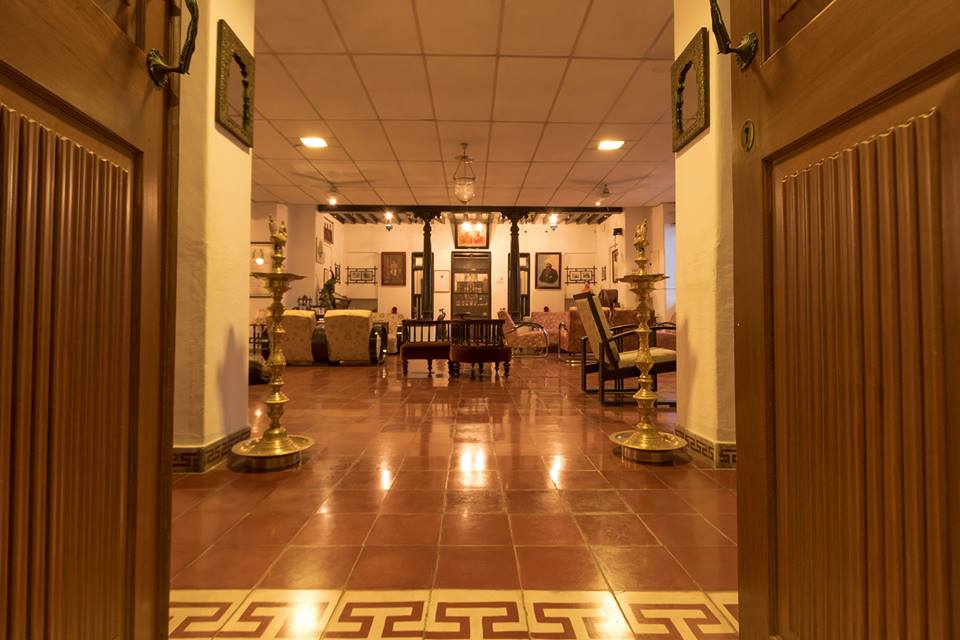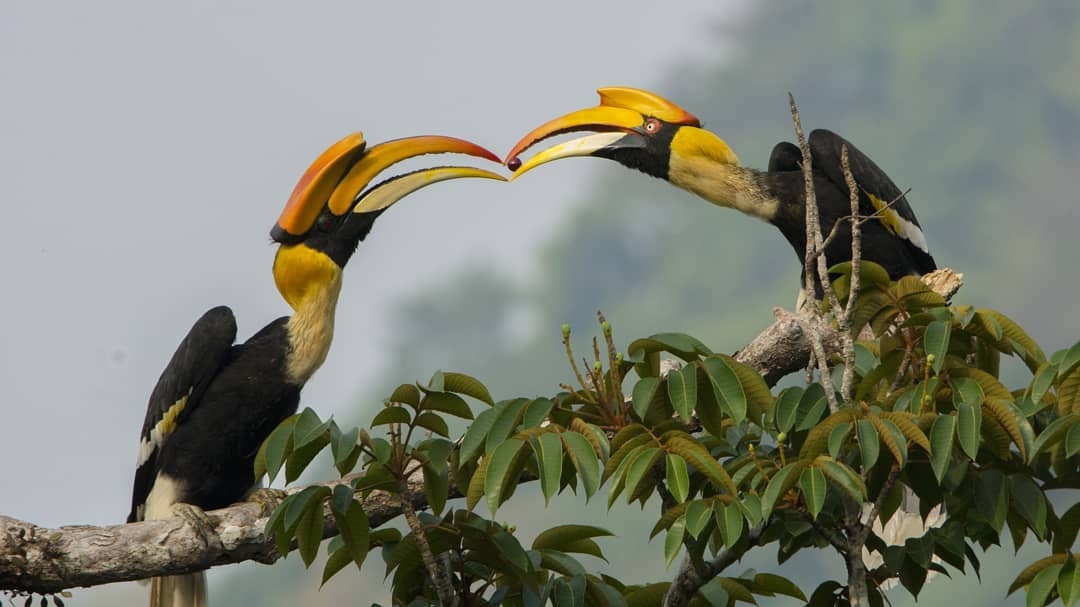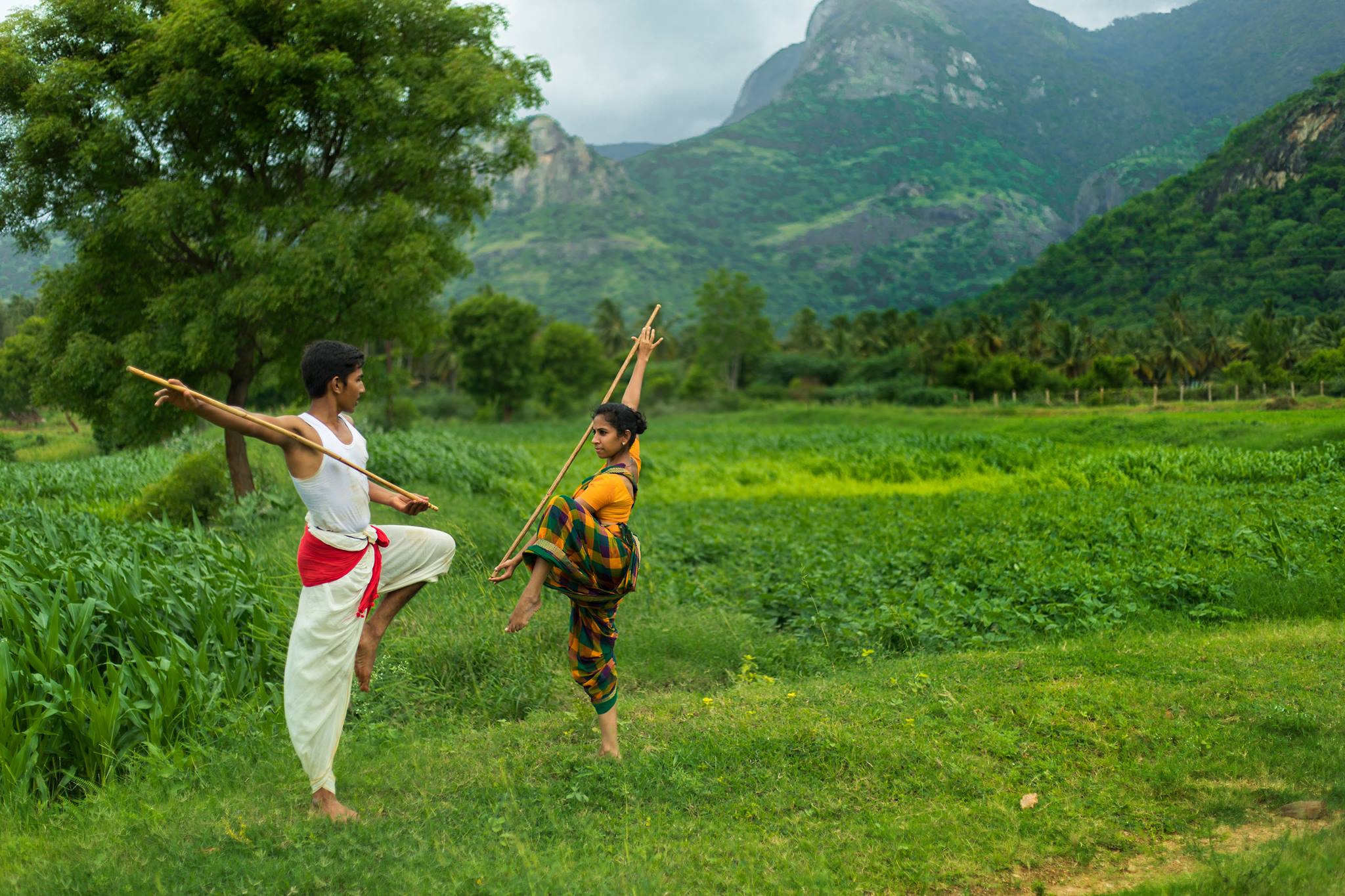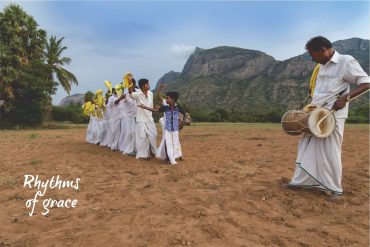The Uthukuli Aranmanai, an impressive vision of traditional construction styles is a reflection of the grandeur and celebratory lifestyle led by the Zamindars of Uthukuli. It’s upkeep and maintenance are now in the hands of Shri. Arun Kumar Kalingarayar and his son Siddharth Kalingarayar. Zamin Uthukuli has been home to the many lives that walked it’s pillared hallways and continue to do so today with the 37th generation of inhabitants. On entering the grounds one is treated to an eye-catching array of bullock carts, each one fashioned according to the original intent of manufacture.
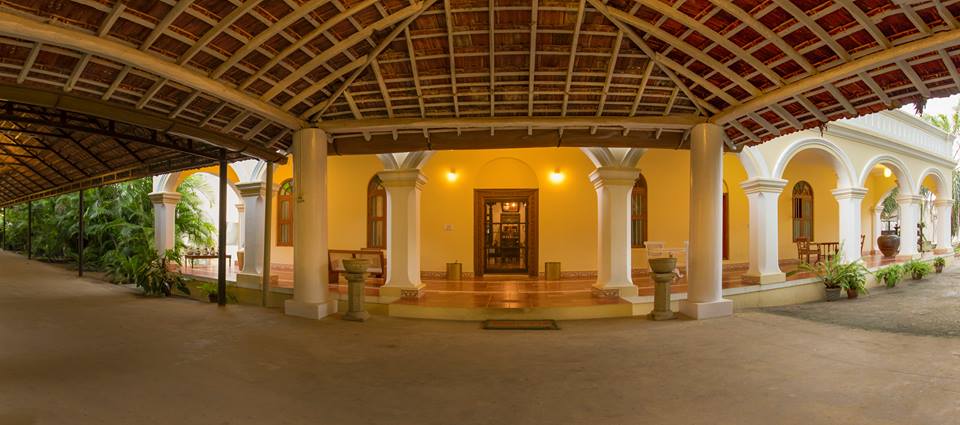
The porch flanked by tall pillars and a luxurious verandah was added about 35 years ago with some members of the family settling here permanently. Surrounded by a large expanse of green, the portico showcases the kind of artefacts which will add delight to any guest.
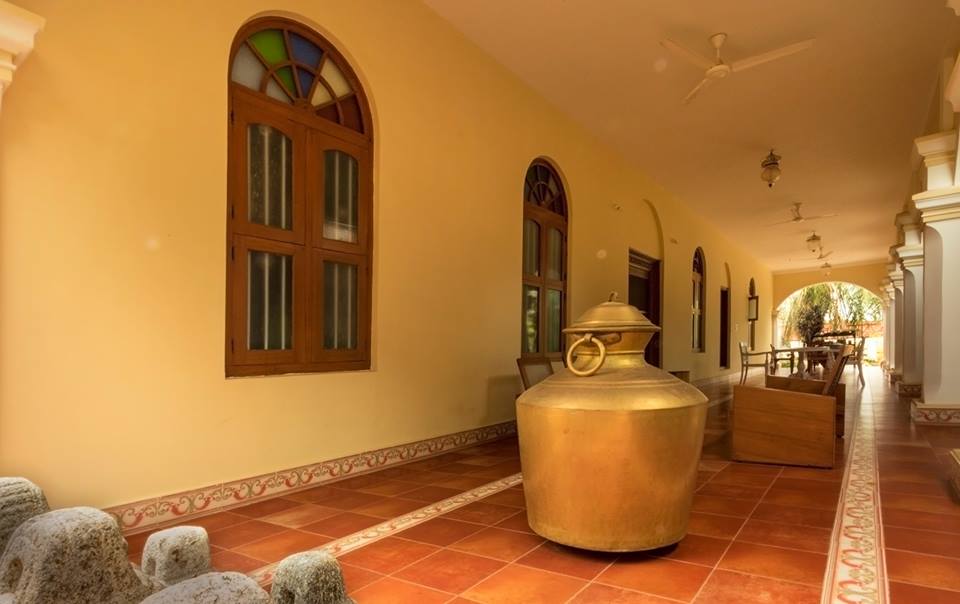
Rarely does one get to see or feel objects and craft of a bygone era like, the hand chiselled traditional stone weights, the huge brass vessel with a lid which apparently was used to store grain and the intricately carved front door all complemented beautifully by the brick red athangudi tiled flooring. The front room of the house floods the vision with a multitude of images. From sepia toned photos to animal trophies, there is so much that most would have only heard of. The ancestors who built the house lived in an era where hunting as a sport was done in a manner which revolved around seasons and conscientiousness to the environment.
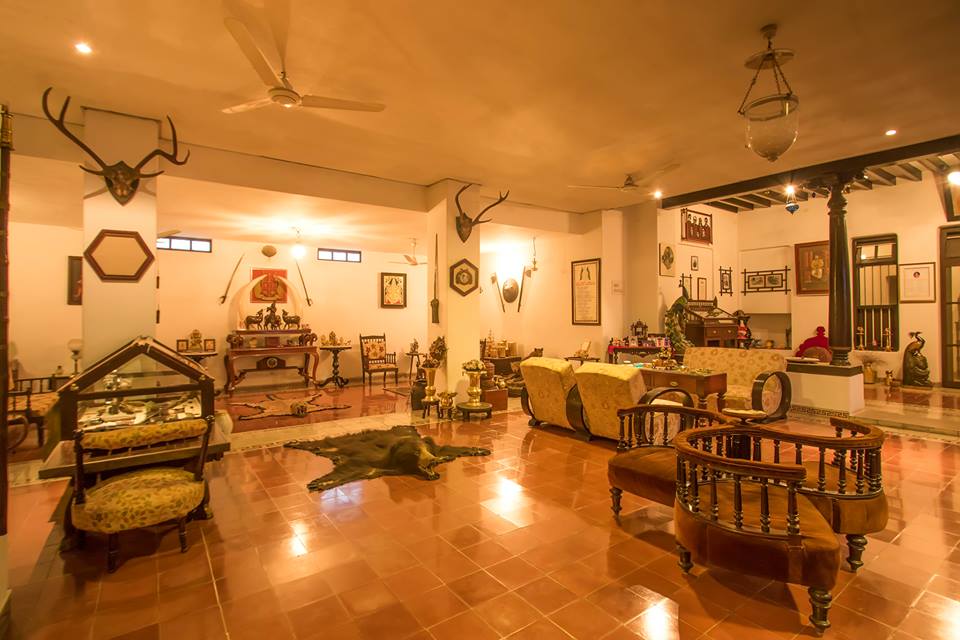
The several wooden cupboards placed around the room each contain testimonials to a life lived at a time when war, hunting and farming were the ways of life. References to the British rule too are rather apparent. The weaponry displayed neatly in one cupboard is more than just guns and rifles. All sorts of knives, sickles and sheaths with handles made of deer horn, bone, wood and metal are neatly lined up for display. One can admire not just the collection but the talent of the craftsmen of yesteryear. All of these are placed in a manner that gives the onlooker not only a sense of awe of the lives lived but also that it was a celebration of the people who worked hard to preserve wealth and wisdom for the future generations.
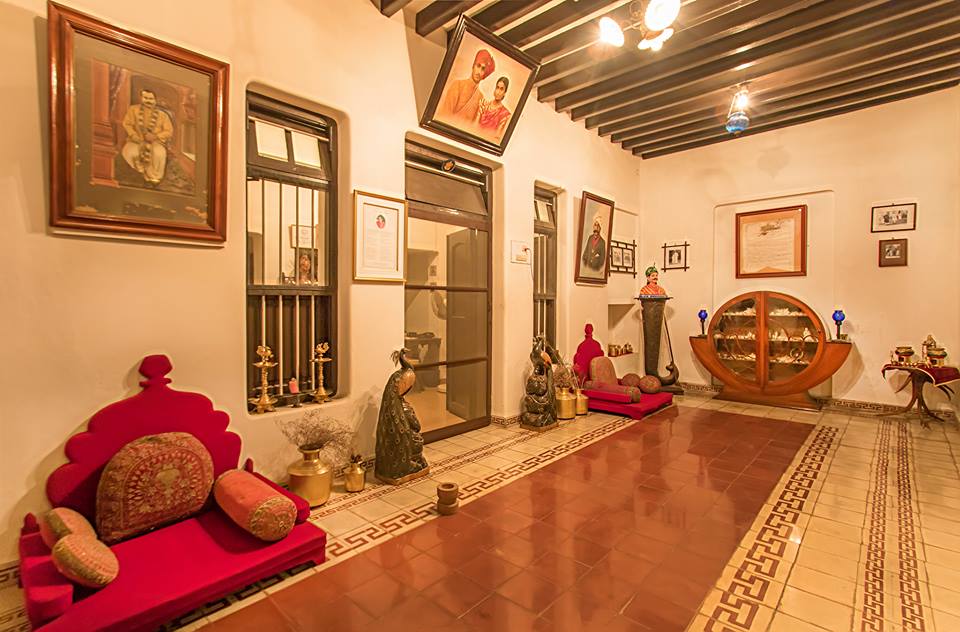
The Kalingarayar crest too in the shape of twin peacocks on opposite sides is highlighted in different ways. It is placed along with an entire row of other medals and emblems above a separate drawer for the sashes made up of silk, brocade and forgotten embroideries. On venturing further, the inner space consisting of rooms on both sides with a stairway, opens out into a picturesque sit-out overlooking not just a pretty lily pond but also offers a bit of a sneak peek through a lemon yellow wall entrance into what Shrinidhi, the lady of the house, refers to as the ‘nandhavanam’. Here, one does feel a deep longing to linger on in the wooden chairs with a hot beverage and the leisure to just stare about with nary a cloudy thought!
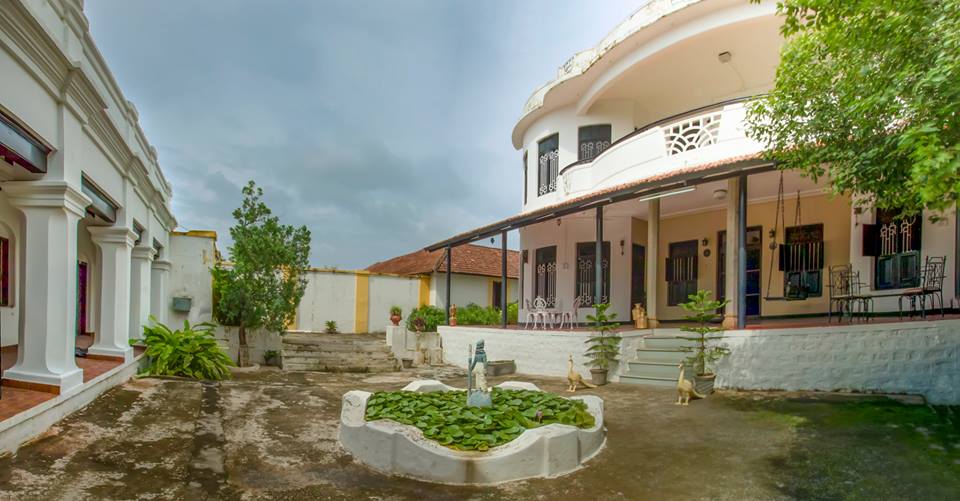
In the first floor, the curved balcony offers a view that shows a large expanse of sky, the garden, most of the palace and the roof tops of the houses in the village. Standing here, one could well envision the matriarch of the family of generations past surveying the land while discharging the duties for the day. A collection of brocade menswear and sarees made with real gold zari gleamed in aged splendour through the glass section of an old cupboard that is situated in a small room on the ground floor.
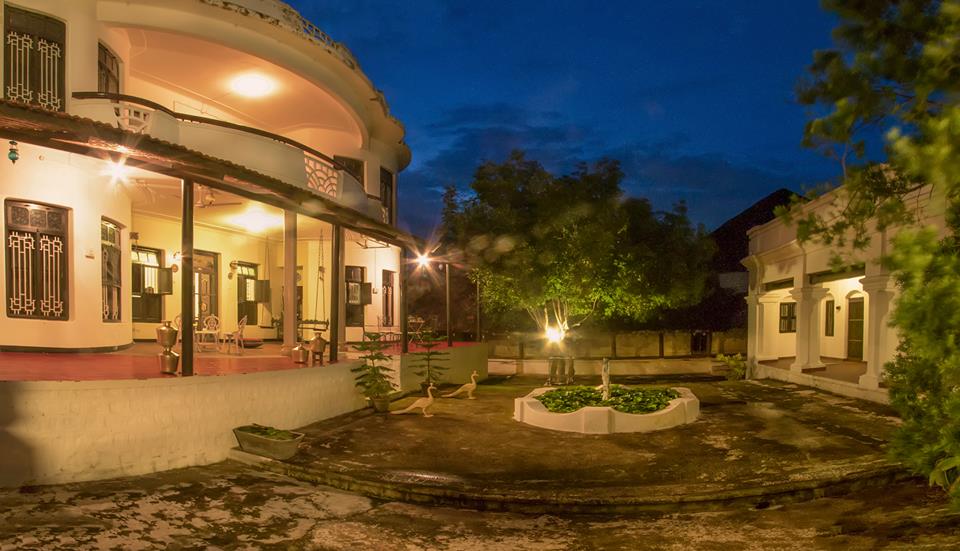
The 350-year-old portion of the palace was recently restored keeping in mind the original way of life and style of architecture. The shell is intact with the antique wooden doors and windows that were a part of the original structure. The teak wood staircase was sadly beyond repair and was replaced by yellow jaisalmer stone instead. At every turn one could see the attention to detail. While the look stayed true to it’s past architectural aesthetics, all modern amenities were put in place to make the area fully functional.
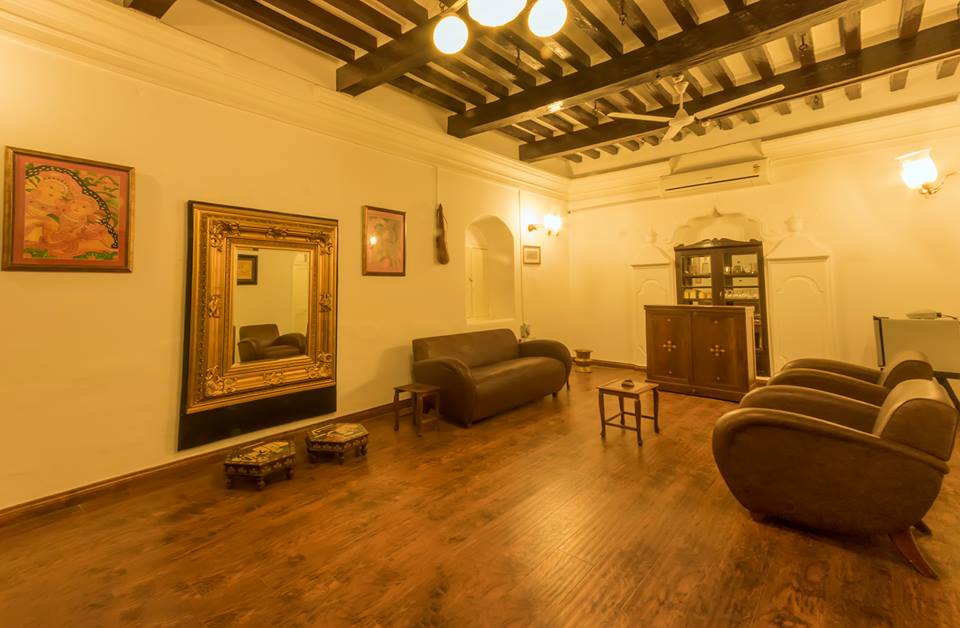
The once trophy room is now home to an antique bar cabinet and collectibles which make it a fancy recreation space. The rooms around which earlier consisted of a communal washing area is now a compact space for accommodating guests during religious and other festivities. There is also a marble topped dining table flanked by seating that is attractive in it’s mismatched styles, purposely placed so after unearthing and refurbishing the various single-seat chairs that were scattered about the palace.
The yellow stone staircase leads to a large niche which contains a sort of day bed, raised high and positioned right in front of doors that open onto the wide terrace. At the moment this large mattress is the resting place for the heavy, ornate royal turban, which graced the head of past rulers and now lies carefully preserved in a glass case. The cooking area is slightly disconnected from the main building and looks just as spic and span as the rest of the grounds. A small temple is positioned between the two areas and is joined by a corridor that winds around a majestic Nagalingam tree .The heady perfume emitted by the unique flowers announces it’s presence even before you look up at the tall old trunk!
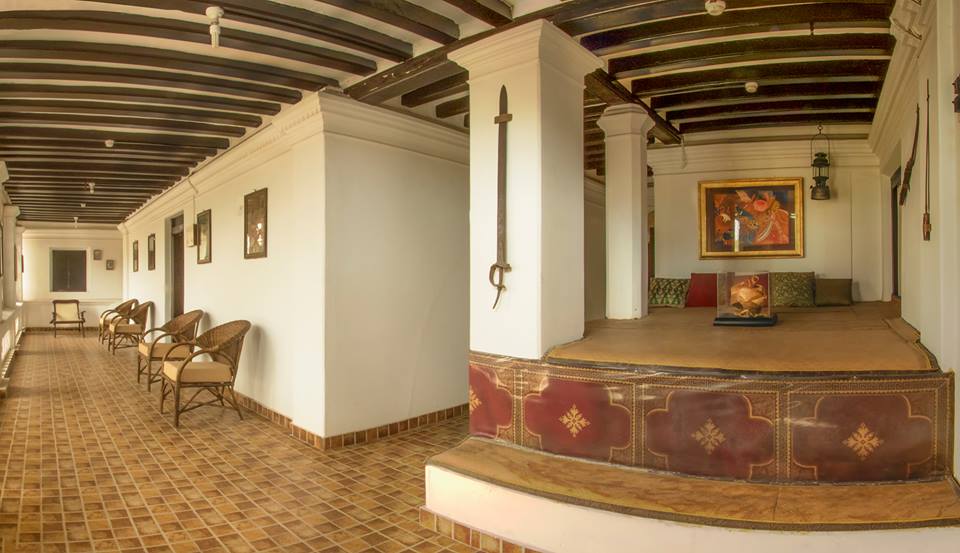
The few hours that one gets to spend amongst the brick, mortar and stone walls that were witness to the daily happenings of the Kalingarayar clan, will tell stories of not just the privileges associated with their name but with it the equal number of responsibilities and duties that they surmounted upon themselves for the betterment of the village.
The Uthukuli aranmanai, is more than a legacy that needs to be preserved. It stands testament to lives devoted to heroism, generosity of purse, honesty of trade and pride in one’s homeland. It must be protected at all costs and Siddharth Kalingarayar and his family are passionate about doing just that!

